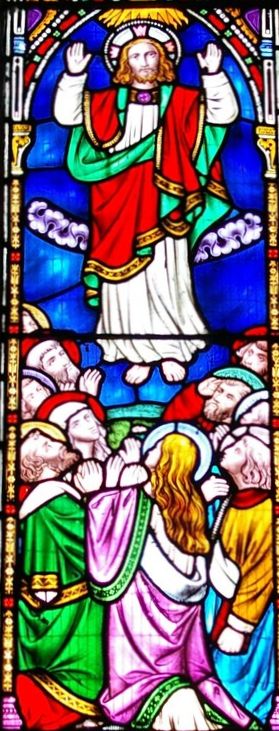
A sermon for Epiphany, 8 January 2022 at St Peter’s, Bramley
Text: Matthew 2:1-12 (The gifts of the magi)
What did you get for Christmas? People often ask us that at this time of year. The gifts that our family and friends give us vary so much, don’t they? Let’s see what I was given this year:




Starting with the trivial – this little penguin Christmas tree decoration. Scott, I’ve called him: Scott of the Antarctic. Then there are the useful presents: a thick, close-fitting cycling top for the cold weather. The specialist hobby things: a book with the technical details of all the trains in Britain. And the tasty treats: for the last few years one of my sisters has given us a home-made hamper of gluten-free goodies to share.
Does your family have a tradition of how and when gifts are given, perhaps in what order? When my sisters and I were children, the rule was that the youngest started giving their presents out first, followed by the next youngest, and parents or grandparents last of all. That was a useful life lesson: the emphasis was on giving rather than receiving: as Jesus said, “it is more blessed to give than to receive”. We can’t expect to receive gifts unless we are also prepared to give them. I’ll come back to that idea later.
One of the origins of this tradition of giving Christmas gifts is the Epiphany story of the magi from the east and their gifts. What were the three things they gave? (call out!) I don’t think I would have known about frankincense or myrrh without this story, would you? Let’s look at what their gifts to Jesus might say about what we can give to him now.
Gold has the same meaning now as always: something valuable, something worth keeping, something special. If someone is ‘worth their weight in gold’ it means their friendship is too valuable to measure. But in the days before banks, it was also a practical way of keeping your treasure with you when you travelled. The magi gave away something very costly, and Mary and Joseph may well have needed to spend the gold during their years of exile in Egypt.
So, if you or I have possessions, can we offer them to Jesus? I’m not just talking about giving money to the church: it might be supporting a Christian charity, opening our homes for church meetings, using a car to offer a lift, lending tools to a neighbour, and so on. That is your gift to the Church’s resources.
The second gift was incense. It had a very practical use as an early form of air freshener – can you imagine how smelly life was in those days, when taking a bath was rare, deodorants and toilets unknown and houses were shared with animals? But incense was also used in the Temple, as it still is in some churches today. The smoke from the incense symbolises prayer rising to God. More than that, the gift of incense to Jesus was a symbol of him becoming our high priest, praying to God the Father for us in heaven.
So, I suggest that we might think of it representing our ministry in the church. That might be helping to lead worship, but there is so much more to Christian service than that. It might equally well be helping with our church’s activity groups, being on the tea rota, doing odd jobs to help the Churchwardens look after the building, offering fundraising skills, or helping with any work we do in the community. It might be praying – for some people, praying for the Church’s work is their unseen but important gift to the Church’s ministry.
And then there was myrrh, the oddest gift of all. It was a spice used in embalming a body after death. Given by the Magi it was a symbol in particular of Jesus’ death on the cross in which he sacrificed his own life to reconcile us to God. His sacrifice was unrepeatable, but the myrrh reminds us that Jesus calls us all to live a selfless life.
We might therefore see it as the gift of ourselves in putting others’ needs before our own. Again, there are many ways of doing that. It might be a pastoral ministry within the church, volunteering with one of the local community groups, welcoming a refugee, or helping with the care of children or elderly people within your own extended family.
It may be that you think you haven’t got money to spare, or a particular talent to use within the church, or spare time to offer as a volunteer. If so, just remember that the Shepherds had already come to Jesus with nothing at all to give him. What mattered most was that they, and the magi after them, came to kneel at the manger and worship Jesus.
I’ll come back to that point I made earlier about it being more blessed to give than to receive. There’s one exception to that: when God is the giver and we are the recipients. God, let us not forget, is the greatest giver. It’s in God’s very nature to give. He is the giver of life itself. The giver of his living word made flesh to reconcile us to himself, and the giver of the Holy Spirit, who himself gives us the gifts that we need to serve him in the world. A verse from the Old Testament often used in church worship is this: “all things come from you [O Lord], and of your own have we given you.”
So, at the start of this new year when we are still thankful for the Christmas presents we received, we can think about what we bring as a gift to Jesus. Starting with our worship, for when we come to worship, we open ourselves to the greatest gift of all. As Jesus also said, “give, and it will be given to you. A good measure, pressed down, shaken together, running over, will be put into your lap; for the measure you give will be the measure you get back.”
Then we will be able to ask what we can give to Jesus in return for all that he has given us. What can I spare of my money for the work of the church? How can I use the things that I have for the benefit of others? What talents and skills do I have that will be of use in the ministry of the Church? And how can I best give my time to help others?
I will finish with that lovely verse of a well known carol: ‘What can I give him, poor as I am? If I were a shepherd, I would bring a lamb. If I were a wise man, I would do my part, yet what I can I give him – give my heart’.

Another of the gifts that I got at Christmas, a ‘little something extra’ from Linda. It’s this heart, hand carved from olive wood grown in Bethlehem. It now sits on the windowsill of my study as a symbol of her love for me, but also a symbol of the love that Jesus, the Babe of Bethlehem, has for all of us. May his love, and his gifts, be with you always. Amen.
